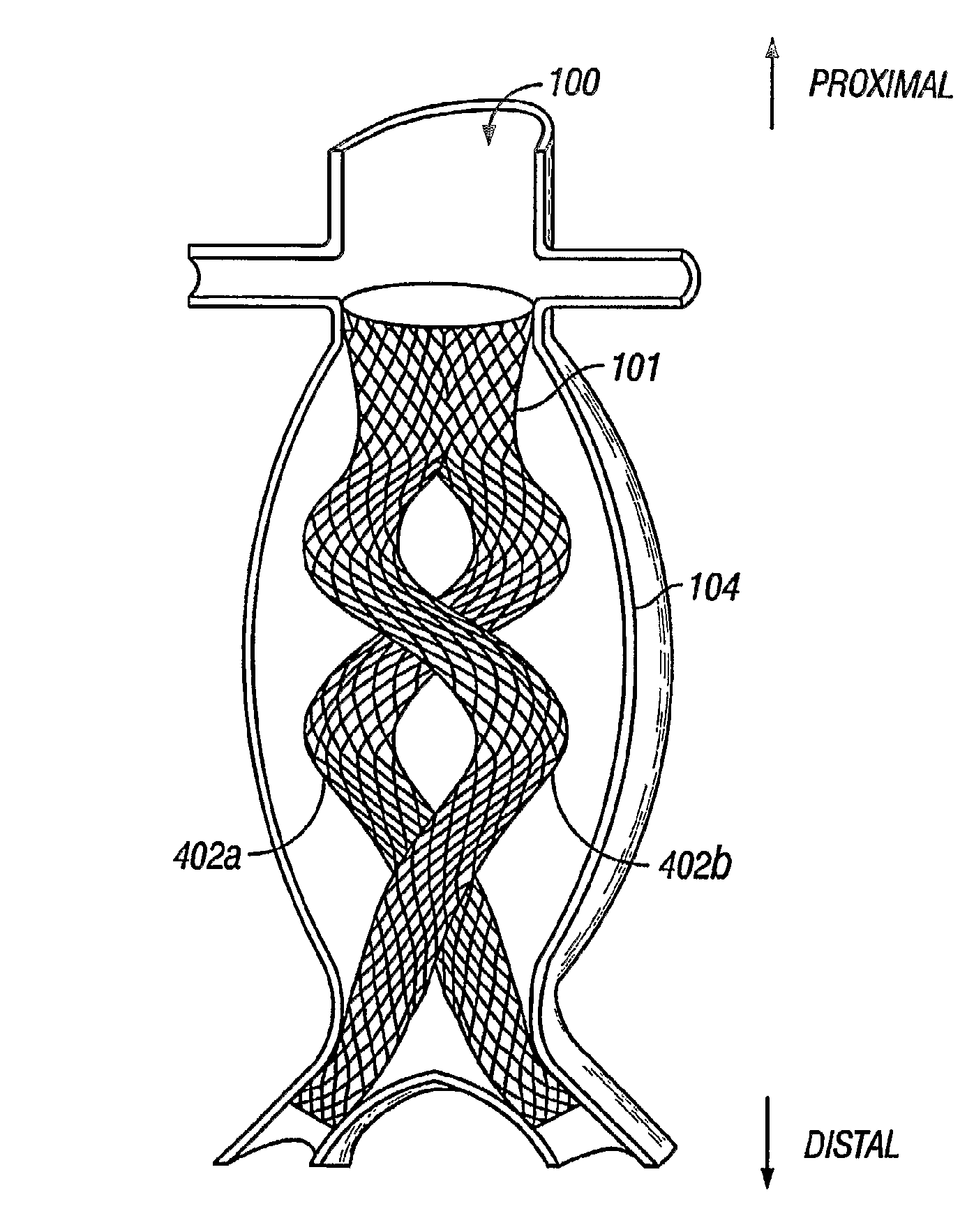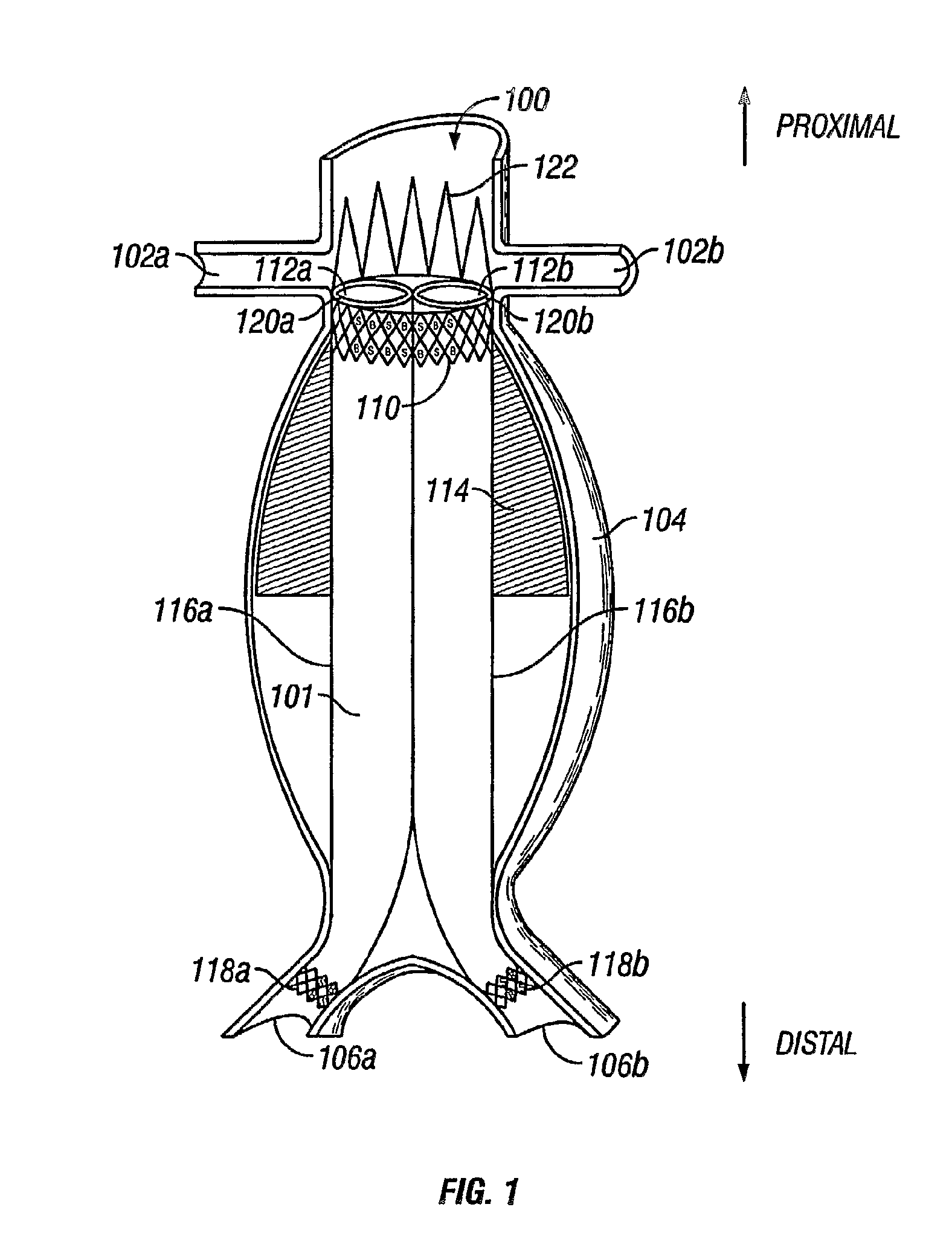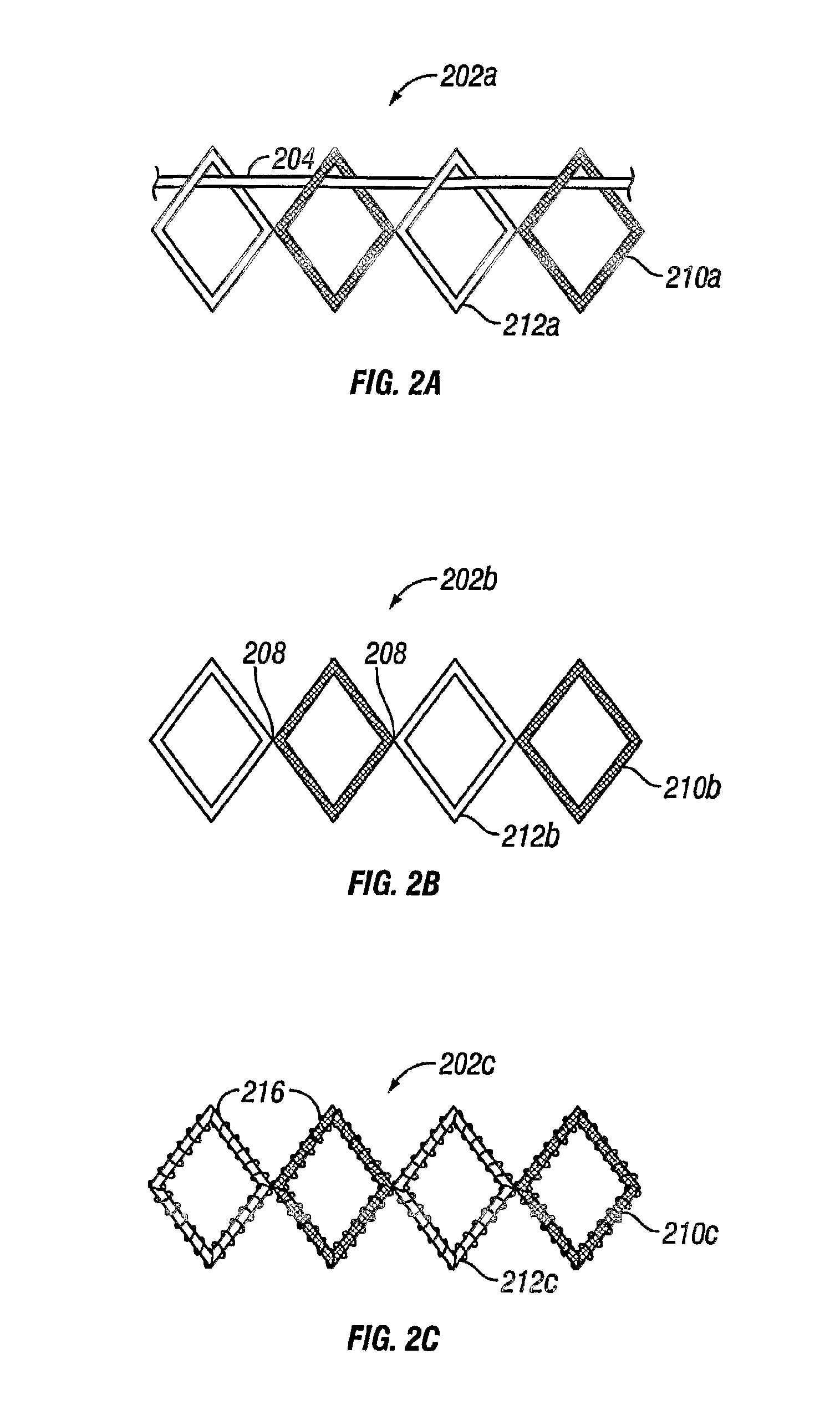Devices and methods for treatment of abdominal aortic aneurysm
a technology for abdominal aortic aneurysms and devices, applied in the field of abdominal aortic aneurysm devices and methods, can solve the problems of dramatic negative health consequences, vessel rupture, and accumulation of cellular material and thrombosis, and achieve the effects of preventing leakage, preventing leakage and/or device slippage, and strengthening the anchoring ability of stent-graft devices
- Summary
- Abstract
- Description
- Claims
- Application Information
AI Technical Summary
Benefits of technology
Problems solved by technology
Method used
Image
Examples
Embodiment Construction
[0043]Generally, the present invention provides devices and methods for treating aneurysms. Although many types of aneurysms may be treated, such as cerebral, carotid and coronary aneurysms, the following discussion focuses on the treatment of abdominal aortic aneurysms (“AAA”). More specifically, stent-graft devices and methods for treating AAA include self-expanding and / or balloon-expandable stent components and one or more graft components coupled with the stent components. Using various combinations of self-expanding stent members, balloon-expandable stent members, graft members, and / or anchoring members enhances the anchoring abilities of a stent-graft device to prevent leakage around it, and may further allow the device to be adjusted after placement at a site for treatment. Some embodiments further include a skirt graft member for further prevention of leakage and / or device slippage.
[0044]Although the following description focuses on embodiments of devices and methods for AAA...
PUM
 Login to View More
Login to View More Abstract
Description
Claims
Application Information
 Login to View More
Login to View More - R&D
- Intellectual Property
- Life Sciences
- Materials
- Tech Scout
- Unparalleled Data Quality
- Higher Quality Content
- 60% Fewer Hallucinations
Browse by: Latest US Patents, China's latest patents, Technical Efficacy Thesaurus, Application Domain, Technology Topic, Popular Technical Reports.
© 2025 PatSnap. All rights reserved.Legal|Privacy policy|Modern Slavery Act Transparency Statement|Sitemap|About US| Contact US: help@patsnap.com



